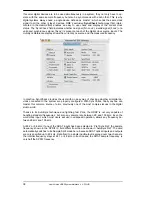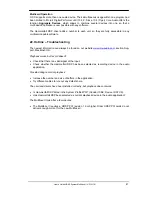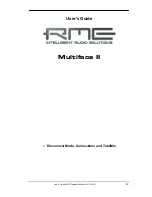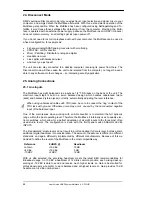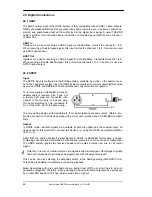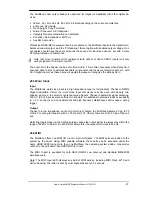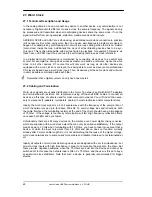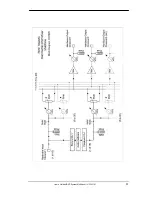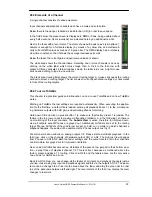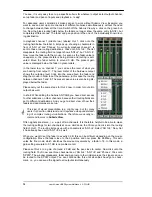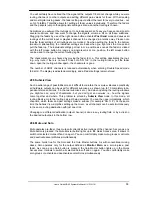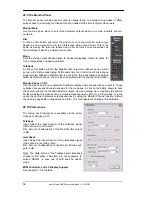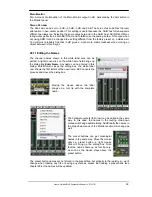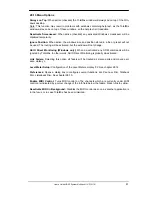
46
User's Guide HDSP System Multiface II
© RME
26. Digital Connections
26.1 ADAT
The ADAT optical input of the HDSP system is fully compatible with all ADAT optical outputs.
RME's unsurpassed Bitclock PLL prevents clicks and drop outs even in extreme varipitch op-
eration, and guarantees a fast and low jitter lock to the digital input signal. A usual TOSLINK
cable is sufficient for connection. More information on Double Speed (S/MUX) can be found in
chapter 34.3.
ADAT In
Interface for a device sending an ADAT signal to the Multiface. Carries the channels 1 to 8.
When receiving a Double Speed signal, this input carries the channels 1 to 4. Can also be used
as SPDIF optical input.
ADAT Out
Interface for a device receiving an ADAT signal from the Multiface. Transmits channels 1 to 8.
When sending a Double Speed signal, this port carries channels 1 to 4. Can also be used as
SPDIF optical output.
26.2 SPDIF
Input
The SPDIF input is configured in the Settings dialog, available by a click on the hammer sym-
bol in the Task Bar's system tray. The HDSP system accepts all commonly used digital sources
as well as SPDIF and AES/EBU. Channel status and copy protection are ignored.
To receive signals in AES/EBU format, an
adapter cable is required. Pins 2 and 3 of
a female XLR plug are connected indi-
vidually to the two pins of a phono plug.
The cable shielding is only connected to
pin 1 of the XLR - not to the phono plug.
The ground-free design, with transformers for coaxial digital inputs and outputs, offers a trou-
ble-free connection of all devices along with perfect hum rejection and full AES/EBU compati-
bility.
Output
In SPDIF mode, identical signals are available at both the optical and the coaxial output. An
obvious use for this would be to connect two devices, i.e. using the HDSP as a splitter (distribu-
tion 1 on 2).
Apart from the audio data itself, digital signals in SPDIF or AES/EBU format have a header
containing channel status information. False channel status is a common cause of malfunction.
The HDSP system ignores the received header and creates a totally new one for its output
signal.
Note that in record or monitor modes, set emphasis bits will disappear. Recordings originally
done with emphasis should always be played back with the emphasis bit set!
This can be done by selecting the
Emphasis
switch in the Settings dialog (field
SPDIF Out
).
This setting is updated immediately, even during playback.
Note: Recordings with (pre-) emphasis show a treble boost (50/15 µs), which has to be com-
pensated at playback. Therefore, when selecting
Emphasis
all analog outputs will be processed
by a treble filter based on 50/15µs, which sounds like a high cut.
Содержание Hammerfall Multiface II
Страница 5: ...User s Guide HDSP System Multiface II RME 5 User s Guide Multiface II General...
Страница 14: ...14 User s Guide HDSP System Multiface II RME...
Страница 43: ...User s Guide HDSP System Multiface II RME 43 User s Guide Multiface II Disconnect Mode Connections and TotalMix...
Страница 51: ...User s Guide HDSP System Multiface II RME 51...
Страница 71: ...User s Guide HDSP System Multiface II RME 71 User s Guide Multiface II Technical Reference...
Страница 80: ...80 User s Guide HDSP System Multiface II RME 35 Diagrams 35 1 Block Diagram Multiface II...







